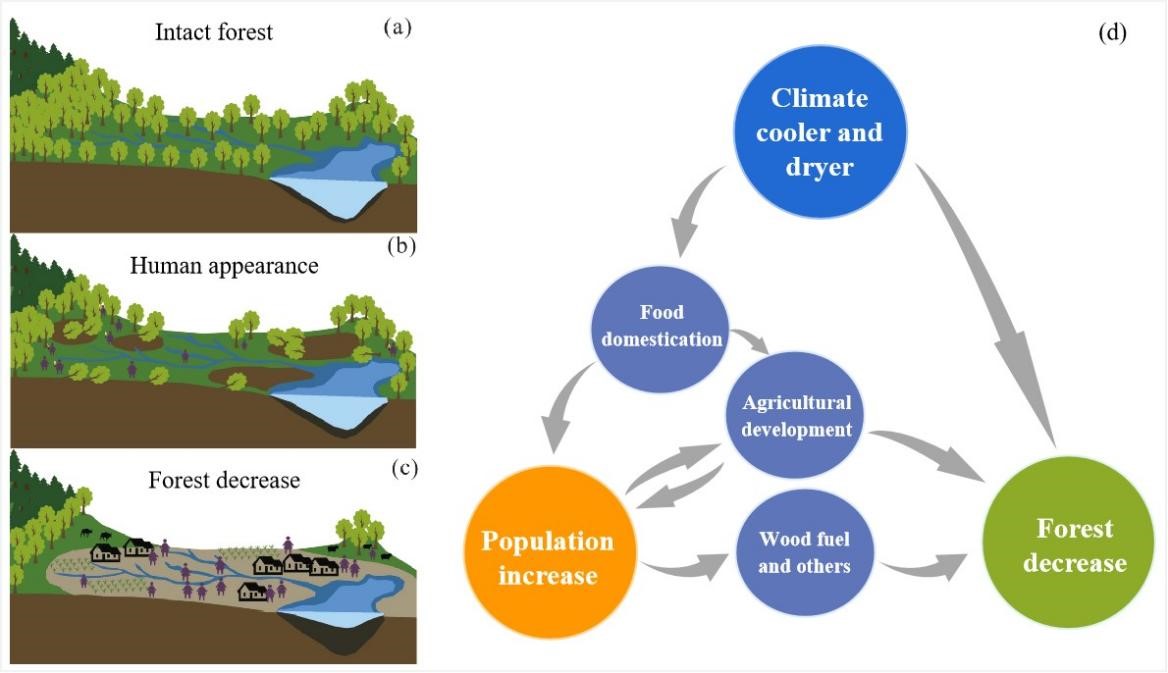Human activities accelerated the degradation of forest ecosystem in East Asia after 5000 a BP
Forest ecosystems are crucial for maintaining global biodiversity and playing a vital role in the carbon cycle. Over the past few decades, numerous studies have documented the extensive transformation and degradation of forest ecosystems due to human actions.
However, understanding the origins, magnitude, and primary effects of human actions on forest ecosystems, particularly in regions with a long history of human activity like East Asia (EA), is indeed a complex task.
A research group led by Prof. LONG Hao from the Nanjing Institute of Geography and Limnology Chinese Academy of Sciences, has recently made a synthesis on a large number of Holocene arboreal pollen sequences from 61 lake basins in East Asia, to explore the response of vegetation to climate and human activities in East Asia.
The research findings were published in Earth-Science Reviews on September 3, 2023.
“An eye-catching decline of arboreal pollen occurred from 5 ka before present across East Asia,” said by Dr. ZHOU Shengfang, the first author of this paper. “Climate change has been recognized as a significant factor in the decline of forest ecosystems during the mid- and late Holocene. cooling and drying climate during this period created unfavorable conditions for forest proliferation.”
“During periods of cooling and drying climate, the survival imperatives of human populations often drove them to adopt practices such as grazing and farming. These actions led to a transition from forest land to agro-pastoral land, which indeed accelerated the degradation of forest ecosystems,” said Prof. LONG.
By dividing East Asia into five subregions, the asynchronous declines in forest vegetation from 8 cal. ka BP (calibrated kilo-annum before present) to 3 cal. ka BP were observed. “This trend is primarily attributed to human impacts, given the pronounced coincidence between forest reduction and emergence and prosperity of Neolithic agriculture in each region,” said Dr. XING Hang.
The positive feedback loop between population growth and agricultural expansion can amplify human impacts. “In East Asia, the combination of population growth, agricultural expansion, and climatic effects resulted in a drastic decline in forest vegetation. This decline reached its lowest level since 10 cal. ka BP at 2.1 cal. ka BP,” said Prof. ZHANG Ke.
Moreover, the anthropogenic influences on forest vegetation in East Asia reflect global patterns of land use, soil erosion, and vegetation changes. These alterations are primarily driven by human activities and often coincide with shifts in atmospheric greenhouse gas levels deviating from their natural trajectory.
“According to our findings, the Anthropocene definition is recommended to consider the aggregate environmental impact of human activities over millennia, instead of restricting to the most recent centuries.” said Prof. LONG.

Influencing and feedback mechanisms of climate change and human activities on forest vegetation (Image by LONG Hao)
Link: https://doi.org/10.1016/j.earscirev.2023.104552
Contact
TAN Lei
Nanjing Institute of Geography and Limnology
E-mail: ltan@niglas.ac.cn
